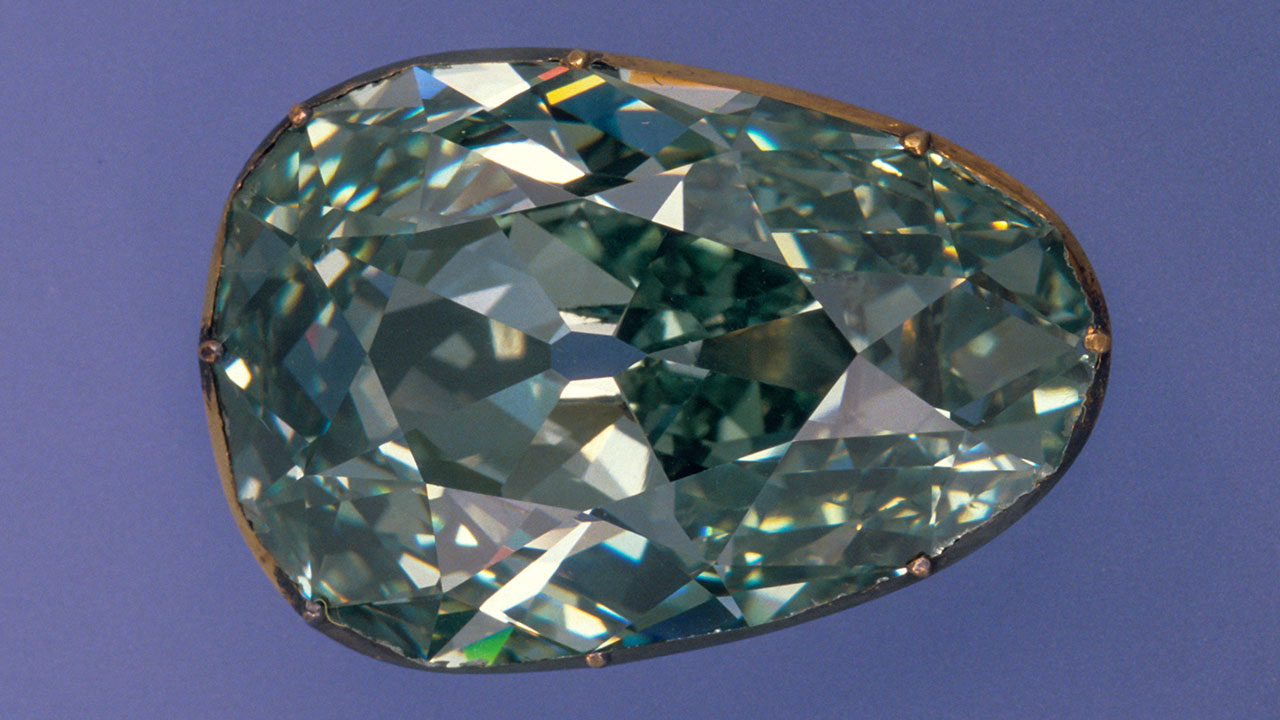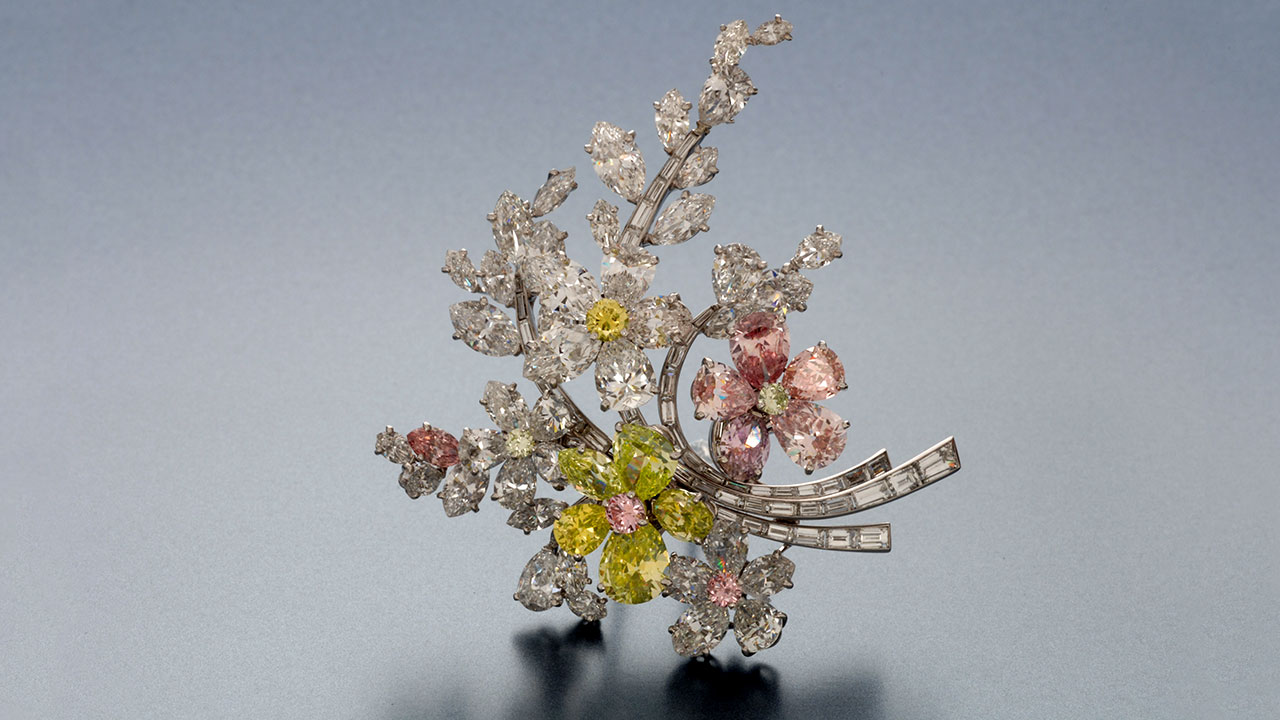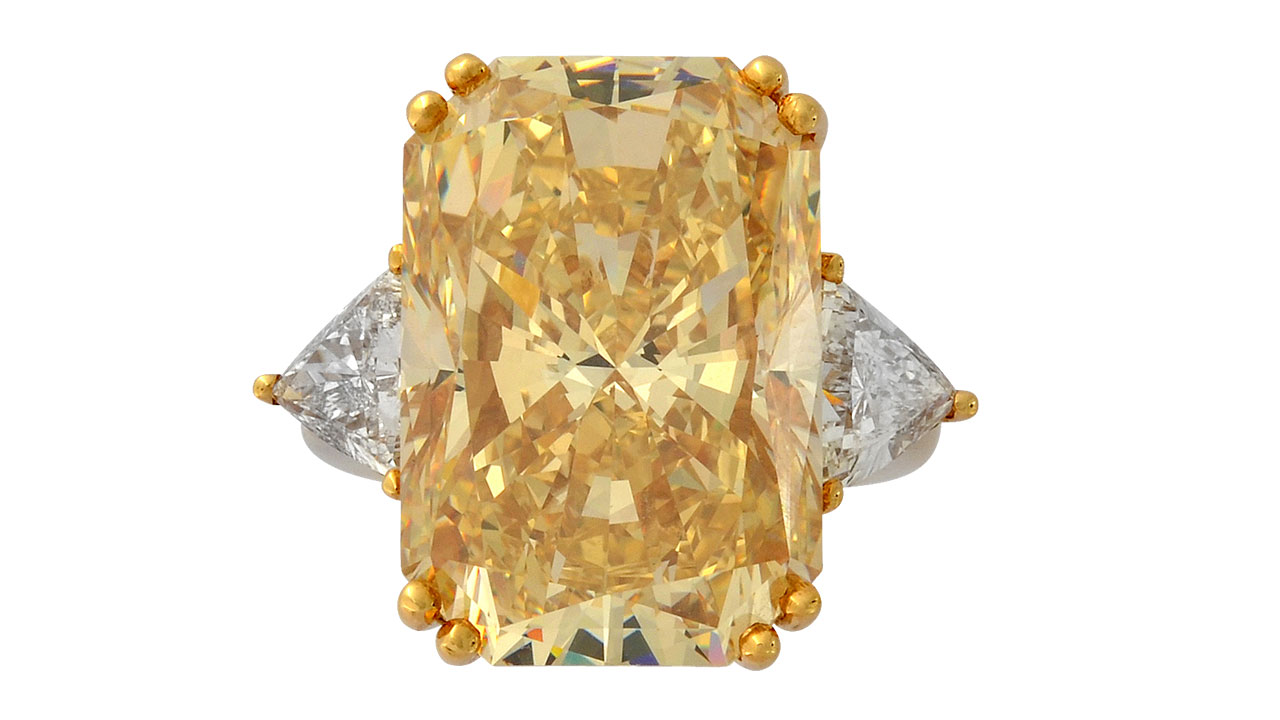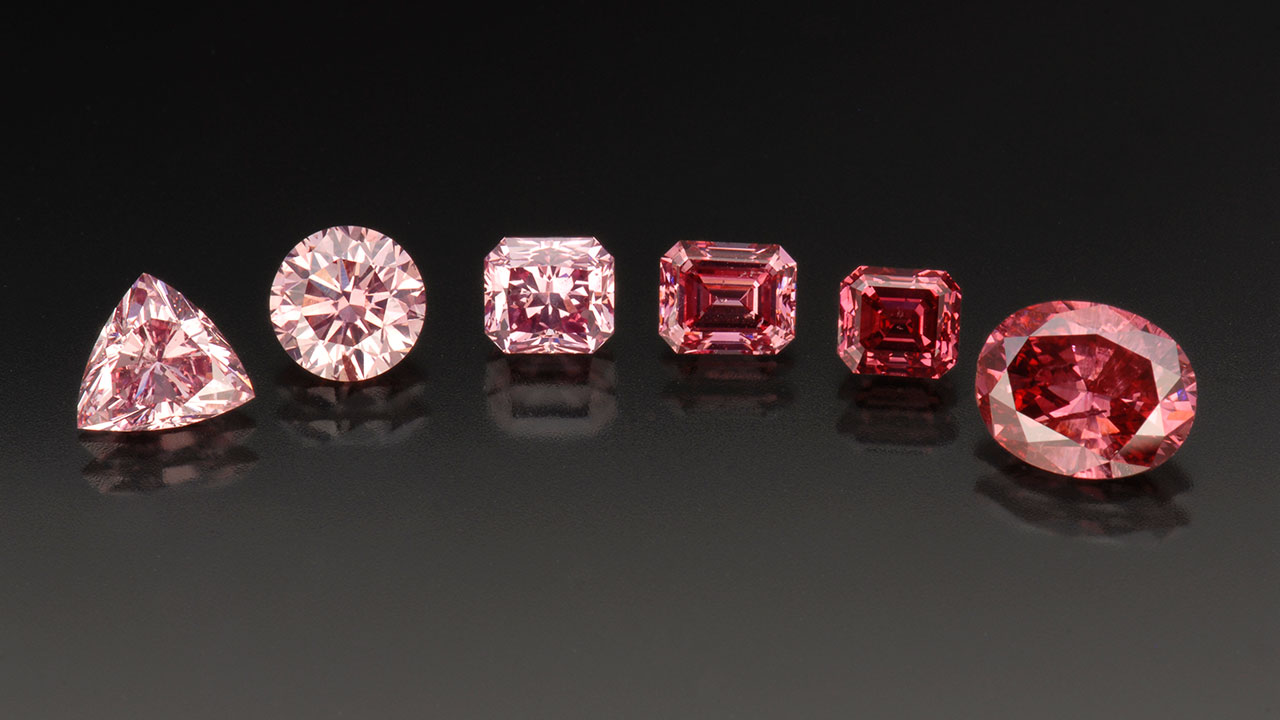Colored Diamonds: A Colorful Anniversary
July 1, 2014
When GIA introduced the International Diamond Grading SystemTM in the 1950s, it revolutionized how colorless to light yellow diamonds were graded. GIA changed the industry again when it debuted the expanded and enhanced Colored Diamond Color Grading System in the Winter 1994 issue of Gems & Gemology.
Celebrating its 20th anniversary, the GIA Colored Diamond Grading System is the method by which colored diamonds are evaluated. It’s been so successful, in fact, that GIA has been entrusted with grading virtually every important colored diamond that has gone to auction, as well as many of the colored diamonds sold around the world.

The Bulgari Blue, a distinctive two-stone ring featuring a 10.95 ct Fancy Vivid blue diamond and a 9.87 ct G-color diamond, fetched $15.76 million at Christie's New York on October 20, 2010. Photo by Jian Xin (Jae) Liao/GIA, courtesy Christie's
The refinements made in 1994 included adding the new color descriptions of Fancy Deep and Fancy Vivid. These joined the existing descriptors: Faint, Very Light, Light, Fancy Light, Fancy, Fancy Dark, and Fancy Intense.The GIA colored diamond grading system allowed a much more detailed description of diamond color, particularly in the top colors, that had been available under the previous grading system. This greatly facilitated trading of such stones worldwide, particularly as new sources expanded the quantities of stones in the market and the range of colors.

GIA graded this 9.05 ct. Fancy Vivid yellow diamond.
Photo © GIA and Robert Weldon, courtesy B. Najjar
Photo © GIA and Robert Weldon, courtesy B. Najjar
The Story Behind the System
GIA first developed the Colored Diamond Color Grading System in the 1950s to evaluate yellow diamonds falling outside the normal colorless to light yellow (D-to-Z) color range. As the Institute received more requests, the system was expanded to accommodate them.Masterstones Make the System Work
GIA’s proprietary masterstones sets – a comprehensive collection grouped by color – may well be one of the largest of any grading laboratory in the world. Just as with the D-to-Z diamond grading system, the masterstones allow laboratory staff to bracket the hue, tone, and saturation of the diamond’s color so that the color can be correctly positioned in color space. The fancy color grade for the diamond can then be assigned.Taking Subjectivity Out of Grading
GIA researchers also understood that the environment, the viewer, and the light source all affected color perception. They addressed these variables by creating a consistent lighting environment equivalent to natural daylight.To ensure a neutral color environment and to produce color-balanced lighting, GIA selected the Judge II Box for graders to use. This ensures graders see diamonds in consistent light, and allows for objective grading.
GIA also makes sure that colored diamond graders are well prepared to evaluate stones. Potential graders have to pass a series of tests and complete special training before they become preliminary colored diamond graders.
The result of these efforts is a repeatable process that takes the subjectivity out of grading and lets graders determine a diamond’s color accurately. With a definitive system in place, buyers can purchase with confidence and peace of mind.
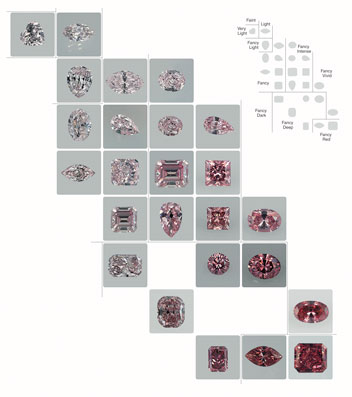
This chart illustrates the color appearances and color grades of pink-to-red diamonds.

